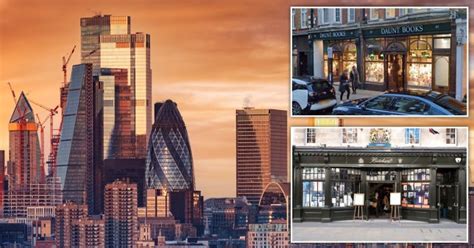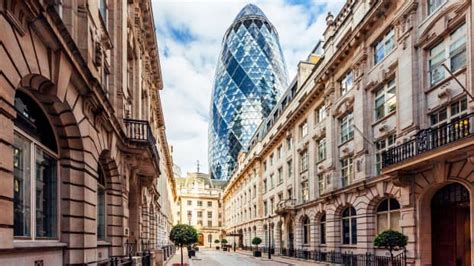The “urban surface” refers to the visible layers of a city that shape its functionality, aesthetics, and livability. From streets and sidewalks to parks and plazas, these surfaces form the canvas upon which city life unfolds. In this article, we explore the concept of the urban surface, tracing its historical evolution and examining the materials and design elements that define it. We’ll delve into how urban surfaces impact daily life, affect environmental sustainability, and reflect technological advancements in modern cities. By looking at successful urban surface projects around the world, we aim to uncover how thoughtful design can enhance the heartbeat of city living, blending tradition with innovation to create vibrant, sustainable urban environments.
ritarblog.com will take you through an extensive exploration of this topic.
1. Defining Urban Surface: An Overview
The urban surface, encompassing the physical layers that constitute a city’s visible infrastructure, plays a crucial role in shaping the urban experience. From streets and sidewalks to parks and plazas, every public or private space that interacts with urban life contributes to this intricate tapestry. These surfaces are more than just functional; they define how people move, gather, and experience the city.
Moreover, the urban surface reflects the identity of a place, revealing its culture, history, and design philosophy. The choice of materials and patterns, whether cobblestone streets or sleek modern pavements, can evoke a city’s past or signal its future direction. By understanding the urban surface, we gain insights into how cities are planned and maintained, and how their public spaces contribute to the overall urban experience.
This concept forms the foundation for more complex urban planning considerations, such as sustainability, accessibility, and technological integration, all of which play a vital role in shaping modern cities.

2. Historical Evolution of Urban Surfaces
The urban landscape has undergone a dramatic transformation over time, mirroring the evolving needs, cultural practices, and technological advancements of civilizations. Ancient cities relied primarily on materials like stone and dirt for their roads and plazas, prioritizing durability and functionality. The Romans, renowned for their engineering prowess, created intricate road systems utilizing layered stone, facilitating efficient transportation and military maneuvers. As cities expanded and technological progress surged, urban surfaces became increasingly diverse, incorporating cobblestones, bricks, and ultimately, asphalt.
The Industrial Revolution sparked rapid urban growth, leading to the development of paved roads and sidewalks. These were built to handle not only pedestrians but also horse-drawn carriages, which were later replaced by automobiles. The 20th century witnessed the widespread adoption of asphalt and concrete, giving urban surfaces a more uniform, durable, and transportation-friendly character.
Recent decades have seen a growing emphasis on sustainable and aesthetically pleasing materials in urban design. This shift reflects a contemporary focus on environmental impact and the usability of public spaces. Urban surfaces now serve not only as functional pathways but also as vibrant hubs for gathering and social interaction. This evolution underscores the interconnectedness of technological advancement and the power of urban surfaces to shape the lived experience of city life.

3. Materials and Design in Urban Landscapes
Urban surfaces, crafted from a variety of materials and designs, significantly influence the character and function of city landscapes. Historically, natural materials such as stone, brick, and gravel were preferred due to their durability and visual appeal. However, contemporary urban environments utilize a broader spectrum of materials, encompassing concrete, asphalt, and permeable paving, to accommodate the needs of modern city life.
Design decisions shape a city’s aesthetic, but also its environmental impact and ease of use. Green spaces, like parks and gardens, help combat urban heat and improve air quality. Meanwhile, permeable surfaces enhance water drainage and lessen the likelihood of flooding.
Furthermore, the design of sidewalks, crosswalks, and public squares promotes social interaction and encourages walking. Urban planners prioritize inclusivity by ensuring these spaces are accessible to all, including people with disabilities. Ultimately, the careful choice of materials and design elements enhances the urban experience, creating dynamic, practical, and sustainable spaces that reflect the city’s unique character.

4. Impact of Urban Surfaces on City Living
In a bustling public space, a creative urban designer stands amidst a vibrant tapestry of urban materials. Clad in a smart yet casual ensemble, they hold aloft a sample of permeable paving, its eco-friendly properties a testament to their commitment to sustainable design. Behind them, a medley of natural stone walkways, verdant parks, and modern concrete structures forms a backdrop that reflects the diverse materials and designs that define the area. With an enthusiastic expression, the designer engages with a small group of onlookers, passionately advocating for the crucial role of sustainable design choices in shaping thriving urban environments. This dynamic scene encapsulates a moment of collaboration and inspiration, highlighting the power of innovative materials and thoughtful design to enhance the livability and aesthetic appeal of our cities.
5. Environmental Considerations and Sustainability
Urban surface design and maintenance are increasingly prioritizing environmental considerations. Traditional materials like asphalt and concrete can exacerbate urban heat island effects and contribute to stormwater runoff, posing environmental challenges. To address these issues, urban planners are embracing sustainable materials and practices that promote ecological balance.
Permeable paving, for example, allows rainwater to infiltrate the ground, thereby mitigating flooding and bolstering groundwater recharge. Green roofs and living walls not only enhance aesthetics but also provide insulation for buildings, leading to reduced energy consumption. Incorporating native plants into urban landscaping fosters biodiversity and minimizes water usage, contributing to the creation of more sustainable urban ecosystems.
Furthermore, sustainable urban surfaces contribute to improved air quality and reduced pollution by mitigating urban heat and fostering healthier microclimates. In essence, prioritizing environmental considerations in urban surface design is essential for building resilient cities that can adapt to climate change, thereby enhancing the quality of life for residents.
6. Technological Innovations in Urban Surface Design
Technological innovations are revolutionizing urban surface design, improving functionality, sustainability, and aesthetics. The advancements in materials science have spurred the creation of intelligent pavements capable of monitoring traffic patterns, weather conditions, and even energy consumption. For instance, sensors integrated into road surfaces can gather data on pedestrian and vehicular movement, aiding city planners in making well-informed decisions regarding infrastructure upgrades and resource distribution.
Moreover, the emergence of eco-conscious materials, including recycled plastics and bio-based composites, enables the development of surfaces that are both robust and sustainable. These advancements minimize the environmental footprint of urban development while enhancing the resilience of surfaces against extreme weather events.
Interactive elements, such as dynamic lighting, wayfinding systems, and augmented reality features, are being incorporated into urban design through digital technologies. These innovations enhance the user experience, fostering a stronger connection between residents and their urban environments. This, in turn, promotes engagement and community interaction.
Adopting these technological advancements enables cities to construct urban environments that fulfill present requirements while also preparing for future obstacles, ultimately fostering smarter and more sustainable urban living.
7. Case Studies: Successful Urban Surface Projects Around the World
Successful urban surface projects worldwide offer valuable insights into innovative ways to improve city life. One prominent example is the High Line in New York City, a former elevated railway that has been transformed into a lively public park. This project breathes new life into a derelict space, integrating green areas and accessible pathways that encourage community interaction and environmental responsibility.
Copenhagen’s Superkilen Park is a testament to multicultural urban design, born from the collaborative efforts of local residents. Its diverse array of materials and designs reflect the city’s rich cultural tapestry, fostering social interaction and outdoor activities. This innovative project seamlessly blends art and functionality, showcasing how urban spaces can be transformed into catalysts for community identity.
Paris’s 15-Minute City concept exemplifies inspiring urban planning. By reimagining neighborhoods, planners aim to make essential services and amenities accessible within a 15-minute walk or bike ride. This initiative prioritizes pedestrian-friendly surfaces, green spaces, and safe cycling infrastructure, fostering a sustainable urban lifestyle.
These case studies demonstrate the power of thoughtful urban surface design to improve the quality of life in cities. They showcase how such design can cultivate community, promote sustainability, and enhance connectivity, all while effectively addressing the unique challenges and opportunities presented by each urban environment.
In conclusion, the urban surface is a vital component of city life, influencing mobility, social interactions, and environmental sustainability. As cities evolve, the thoughtful design and material choices of urban surfaces play a crucial role in shaping the experiences of their inhabitants. By learning from successful case studies and embracing technological innovations, urban planners can create spaces that not only meet the needs of the present but also anticipate future challenges. Ultimately, prioritizing urban surfaces is essential for fostering vibrant, inclusive, and sustainable communities, enhancing the overall quality of life in urban environments.
ritarblog.com

